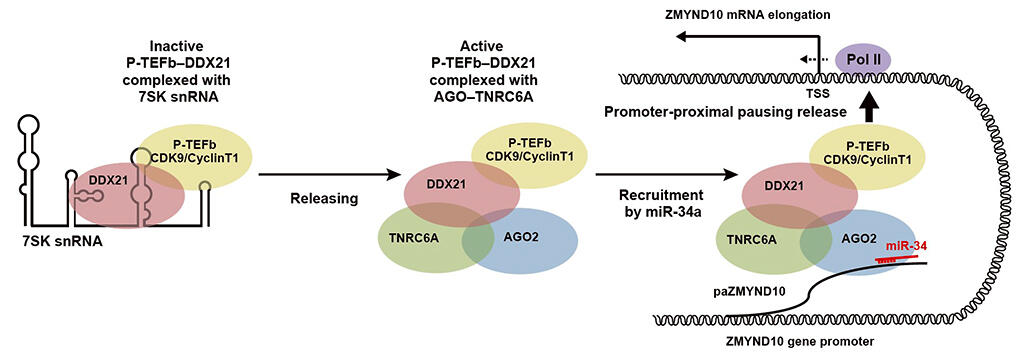A research team led by Professor Masahiko Kuroda and lecturer Shin-ichiro Ohno of the Department of Molecular Pathology, Tokyo Medical University, in collaboration with Professor Norihiko Ikeda of the Division of Thoracic and Thyroid Surgery, and Professor Takahiro Ochiya of the Institute of Medical Science, Tokyo Medical University , and Professor Xiaozhong Wang of Northwestern University in the United States, has revealed a novel mechanism by which micro RNA (miRNA), which are known to suppress gene expression, directly increase gene expression.

Provided by Tokyo Medical University
Short RNAs, such as miRNA and siRNA, are widely known to bind to various messenger RNAs and suppress gene expression. At the same time, however, it has been suggested that these short RNAs may also have a role in increasing gene expression, but the mechanism was unknown.
The research team discovered that miR-34a, an miRNA known to suppress cancer, directly induces transcription of the cancer suppressing gene ZMYND10, and analyzed the molecular mechanism of this phenomenon.
Their analysis revealed that the miR-34a-AGO-TNRC6A complex binds to noncoding RNA (paRNA) expressed from the promoter region of the ZMYND10 gene, and that the miRNA-AGO complex is accompanied by the transcriptional activator DDX21-CDK9, which activates the paused RNA synthase and induces transcription.
"The mechanism of transcriptional activation by short RNAs, such as miRNA and siRNA, has long been a mystery," commented Dr. Kuroda. "This is because there are many types of gene expression that are directly or indirectly regulated by short RNAs, and it is difficult to identify regulation by RNAa among them. Now that we know the molecular mechanism of RNAa, I expect it to lead to the creation of new molecular biological methods for inducing the expression of arbitrary genes by activating endogenous promoters, the development of new nucleic acid drugs, and the elucidation of the pathophysiology of diseases."
This article has been translated by JST with permission from The Science News Ltd.(https://sci-news.co.jp/). Unauthorized reproduction of the article and photographs is prohibited.




